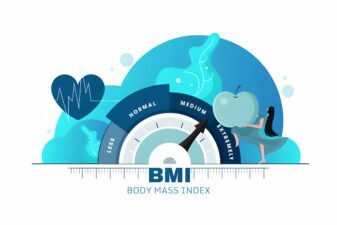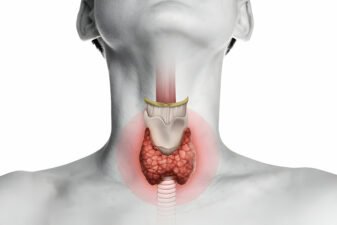Introduction
Since the type and amount of cholesterol in your body can have important health effects on your cardiovascular system, it’s a good idea to understand what cholesterol is, how it affects your health and how to manage your blood cholesterol levels. Such understanding helps you take better care of your heart and live a healthier life, reducing your personal risk for heart attack and stroke in the process.
Where Does Cholesterol Come From?
Most of your cholesterol is made by your liver from saturated fat in your diet. Some cholesterol also comes from foods such as eggs, meats and dairy products.
Why is Excessive Cholesterol Dangerous?
The extra cholesterol in your blood may be stored in your arteries, causing them to narrow. (A process called atherosclerosis.) If large deposits of cholesterol build up on your artery walls, blood flow can become completely blocked. If this happens inside an artery that supplies blood to the heart, you may suffer a heart attack. If this happens to an artery supplying blood to the brain becomes blocked, you may suffer a stroke.
When to Have Your Cholesterol Level Measured?
Men aged 35 and older and women aged 45 and older should have their cholesterol checked periodically. Exactly how often will depend on your cholesterol level and what other risk factors for heart disease you have.
What is a Healthy Total Cholesterol Level?
Here are the three basic categories for total blood cholesterol:
– Desirable — Less than 200 mg/dL
– Borderline High Risk — 200–239 mg/dL
– High Risk — 240 mg/dL and over
| Read About Anne Collins Healthy Cholesterol Diet Read How Members Have Lowered Their Cholesterol Levels |
Desirable
If your total blood cholesterol is lower than 200 mg/dL, your risk of heart attack is relatively low, unless you have other risk factors. That said, it’s still a good idea to eat foods low in saturated fat and dietary-cholesterol, and take plenty of physical exercise. Lastly, to monitor possible changes in your cholesterol levels, have them measured every five years — or more often if you’re a man over 45 or a woman over 55.
Borderline High Risk
If your total blood cholesterol is 200-239 mg/dL you are in the borderline high risk category. About 1 in 3 Americans fall into this category. Not everyone whose cholesterol level is between 200 and 239 mg/dL, is at high risk for a heart attack. Some people — such as women before entering menopause, and fit young men with no other risk factors — may have high HDL cholesterol and desirable LDL levels. The important thing is to talk over your cholesterol results with your doctor, and ask for clear advice. To monitor possible changes in your cholesterol levels, have them measured every two years – more often if you have other risk factors. Meantime, your doctor will almost certainly advise you to lower your intake of foods high in saturated fat and cholesterol, and start a regular program of exercise, in order to reduce your blood cholesterol level to below 200 mg/dL.
High Risk
If your total blood cholesterol level is 240 or more, you are in the high risk category, with typically twice the risk of heart attack as those people with a cholesterol level of 200 mg/dL or less. About 1 in 5 Americans are in this high risk category. If your “total” cholesterol is 240 or more, your doctor will advise more detailed tests to verify the level of the different types of blood-fats (lipids) in your body. Tests are typically conducted on Low-Density Lipoprotein (LDL), High-Density Lipoprotein (HDL) and triglycerides. Low-density lipoproteins are bad because they deliver cholesterol to the body. High-density lipoproteins are good because they remove cholesterol from the bloodstream.
LDL Cholesterol
This type of cholesterol is bad and has a significant effect on your risk of heart attack and stroke. The lower the LDL cholesterol, the lower the risk. In fact, LDL levels are better predictors of health risk than total blood cholesterol.
LDL Cholesterol Levels
– Less than 100 mg/dL (Optimal)
– 100 to 129 mg/dL (Near Optimal/ Above Optimal)
– 130 to 159 mg/dL (Borderline High)
– 160 to 189 mg/dL (High)
– 190 mg/dL and above (Very High)
To lower your LDL level, your doctor will recommend a low-saturated fat diet with regular exercise. A weight reduction program is typically recommended for overweight patients. Cholesterol-lowering medications may also be prescribed to reduce the risk of heart attack.
HDL Cholesterol
This type of cholesterol is good and helps to reduce the risk of heart attack and stroke.
HDL Cholesterol Levels
– Less than 40 means you’re at higher risk for heart disease.
– 60 or higher reduces your risk of heart disease.
Factors that lower the level of good HDL cholesterol include: smoking, overweight or obesity, and a sedentary lifestyle. Progesterone, anabolic steroids and male sex hormones (testosterone) can lower HDL cholesterol levels. Female sex hormones raise HDL cholesterol levels.
Triglycerides
Your triglyceride level is often linked to your HDL level. When the latter are low, triglycerides are often high. In fact, triglycerides, HDL and LDL cholesterol are all interrelated.
Triglyceride Levels
– Less than 150 mg/dL (Normal)
– 150–199 mg/dL (Borderline-high)
– 200–499 mg/dL (High)
– 500 mg/dL or higher (Very high)
Common situations where high triglyceride levels are seen include: diabetes, obesity, high alcohol consumption, high intakes of high-GI carbohydrates, and a sedentary lifestyle. Thus (in addition to eating less saturated fat and dietary cholesterol) weight loss and increased exercise, good blood-glucose management, and reduction in alcohol intake are all especially helpful in reducing triglyceride levels.
Other Risk Factors For Heart Disease
These include:
– A previous heart attack
– Being a man 45 years of age or older
– Having a father or brother who had heart disease before he was 55
– Being a woman who is in or past menopause
– Having a mother or sister who had heart disease before she was 65
– Cigarette smoking
– High blood pressure or diabetes
– Being Obese (BMI > 30)
– Leading a sedentary life
More Information About Weight Management











